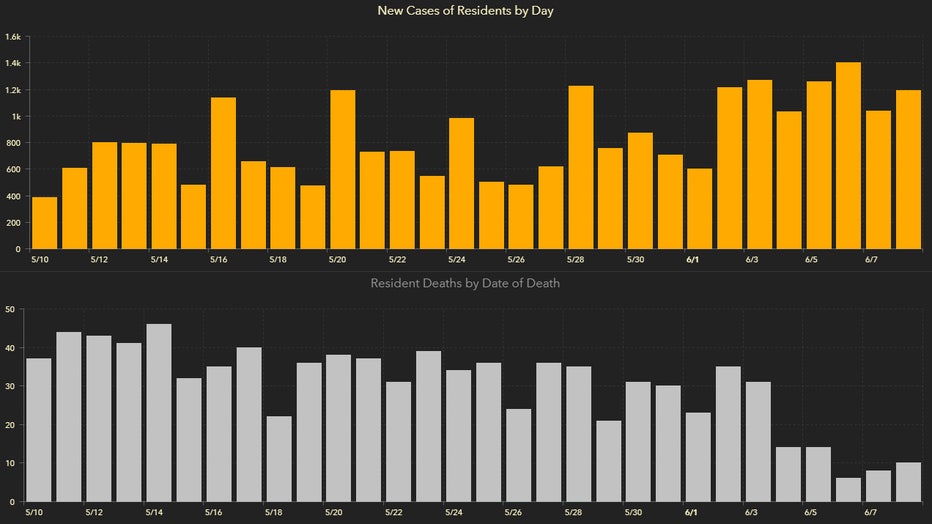Florida sees another day of 1,000+ new COVID-19 cases; what's behind the numbers?
TAMPA, Fla. - In the last week, Florida has seen a spike in coronavirus cases. And that's sparking questions as to why. Is it the result of more social interaction, more open businesses, more testing, or a combination of factors?
June 1, Florida reported 602 new positive COVID-19 cases. Since then, each day has brought totals of around 1,000 or more. But in recent days, we've also seen some decreases in the number of deaths statewide -- though delays in reporting that statistic make it tougher to extrapolate trends.
What do these numbers indicate? There's a lot of context to consider.
"It's a misunderstanding that the virus is not a big deal," said Dr. Manuel Gordillo, infectious disease specialist and medical director of Sarasota Memorial Hospital Infection Prevention and Control. "It is a huge deal. The virus has not changed, has not mutated for the better or worse. The virus is out there lurking, waiting for opportunities to pounce."
MORE: Coronavirus cases in Florida hit 66,000; 53 new deaths reported

Florida resident cases in orange; Florida resident deaths in gray. Source: Fla. Dept. of Health.
First, there's more testing. Since March, a total of 1,259,283 people in Florida have been tested, according to the Florida Department of Health, with 5.2% getting positive results. In the last week, the state tested an average of 36,000 people a day.
Hospitalization is another indicator of where things stand. Sarasota Memorial Hospital, for example, had 39 positive COVID-19 patients May 9; June 9, they had just 12.
While they've been fortunate to be on the lower end of positive cases, "We're all interconnected," Gordillo said. 'So, what's happening in DeSoto County can affect us."
LINK: County-by-county Florida coronavirus cases and ZIP code map
The most important number to watch is the percent of positive cases. At the start of the outbreak, we saw numbers of 10% or more.
"I'm encouraged by the fact that positivity rate, in general, seems to be steady at 3% to 4%," Gordillo said.
"This is going to be a critical time and we can not let our guard down," he said. "If we do, obviously, there is no good biological reason why the virus will not come back."

Expert says coronavirus spike is ‘wake-up call’
An unnerving trend appears to be revealing itself when it comes to new coronavirus cases in Florida -- the numbers are going up. Since Tuesday, the state has seen at least six days in a row with more than 1,000 new cases each. Florida had been averaging just 700 a day.
In Hillsborough County, Monday brought its highest single-day increase since the pandemic began, with 113 new cases. County officials urge residents to continue social distancing measures and wearing cloth face covers.
Meanwhile in St. Pete, as testing increases, Mayor Rick Kriseman reports the number of positive cases is trending younger.
"Back in March, the age group who was testing positive the most was ages 75 and up," Kriseman said. "Today is much different. Today, the age group who is testing positive the most is 25 to 34."
RELATED: More tests, more cases: What's behind Florida's coronavirus spike?
Kriseman warned that if the percentage of positive tests rises, the city may take action stricter than the governor's.
"We can't afford to go backward. We can't afford the economic hit. We can't afford the impact, emotionally. We need to tighten up," Kriseman said.
The whole point of those early stay-at-home orders and business shutdowns was to slow the spread of the virus and ensure enough hospital beds would be available, should they be needed. At last check. there are more than 16,000 available beds statewide, or 26.4% out of more than 61,000, according to the Agency for Health Care Administration.


